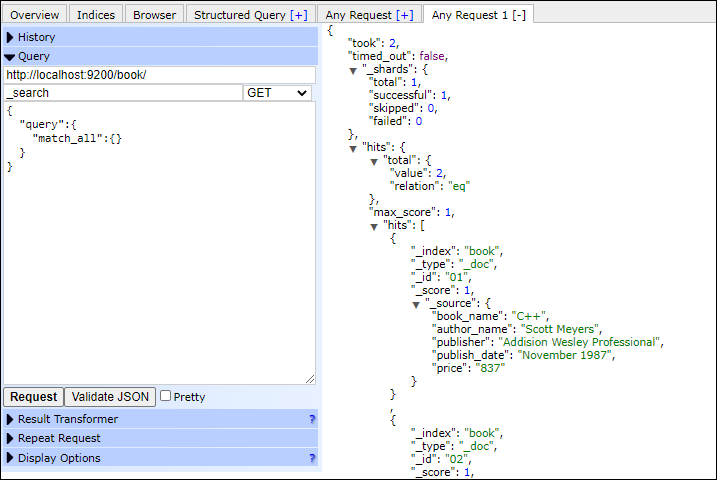

This is how we turn off the Dynamic field mapping.


In this document, every object in the flatData array represents a leaf node in the original document and has the following fields: Continuing our previous example, instead of indexing the original document, we could index the following document: With predefined fields holding the flattened keys and values of the original data. The idea for this solution mainly comes from this blog post. And with a bit of effort, we can define an index mapping that will allow us to index documents with high variation of field names, including documents with fields of different types or fields with arrays of different value types.

Creating an IndexĪs you have already guessed, we need to turn off the Dynamic field mapping to prevent index type mappings from growing with every newly introduced field. A similar problem will occur if we try to index a document with an array field of different types (assuming coercion is turned off or can not be applied). "reason": "failed to parse ",īecause we have already indexed one document with a float value for the field, we can not index another document with a different type for the same field. For example, let's try to index the following document into my_index index under my_type type: Indexing and Searching Arbitrary Data in Elasticsearch ( View large version) Dynamic or Strict?īefore we begin, let's see how the default Dynamic field mapping works and what happens when we try to index arbitrary JSON documents.
#Json query elastisearch how to
In addition, I will show how to use Elasticsearch aggregations to fetch a list of all the available fields and their respective types of indexed data. Nevertheless, the indexed data will still be searchable by any fields, including nested fields, by specifying their path in a "dot" notation format. All this, without exploding the index type mapping with arbitrary properties originating from the indexed data. In this post, I would like to show you how to create an Elasticsearch index to index arbitrary JSON data, including data with nested arrays and objects. However, if your documents have a high variation of field names (sparse data) or have the same field names but different types, you will need a different approach. Therefore, if you need to index documents with a high similarity between their field names (dense data), including field types, then this default behavior may be precisely what you want. If you have ever worked with Elasticsearch, then you are probably familiar with one of the most important features of Elasticsearch - the Dynamic Field Mapping:īy default, when a previously unseen field is found in a document, Elasticsearch will add the new field to the type mapping.


 0 kommentar(er)
0 kommentar(er)
